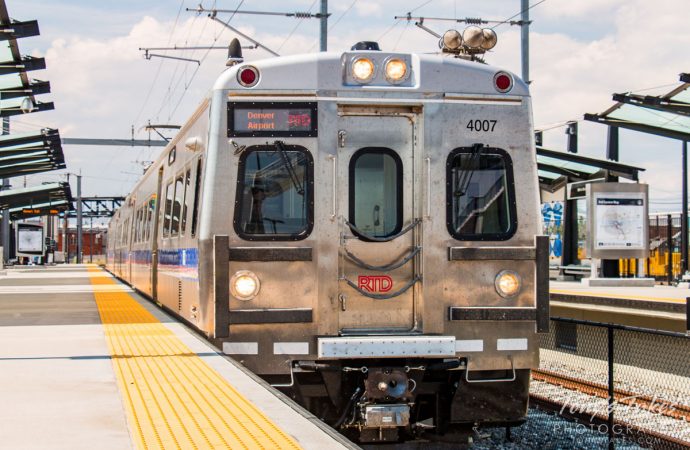by Jon Caldara
As you may know, I have a hard time giving RTD a compliment. But they’ve earned one.
My political career started when I was elected to the Regional Transportation District board in 1994, where I later became chairman. I was quick to realize that not only does RTD do little to increase mobility for the fortune it spends, but it’s the main reason we’re stuck in traffic jams.
RTD has a total appropriation of $2.5 billion this year, yet it carries less than 3 percent of our commutes. By contrast, the Colorado Department of Transportation, which helps carry the remaining 97 percent of us poor schlubs, gets half that — $1.2 billion. Remember CDOT serves the entire state, not just the Denver metro area like RTD.
Stew on that math next time you’re stuck in traffic.
The old joke was RTD stood for Reason To Drive. Talk to most transit-dependent people and they’d agree. Poor people without a car don’t want a bus pass. They want a car, and all the freedom and independence that comes with it.
Talk to people who own a car but choose transit to avoid paying for parking when they go to work or a ballgame, and they might say RTD stands for Road To Denver. The one thing RTD can boast about, and they do so endlessly, is bringing people from the ‘burbs to downtown.
Sadly, most modern commutes are from suburb to suburb, not suburb to downtown. This makes RTD’s 19th century hub-and-spoke rail system perfect for, well, the 19th century.
The most expensive cost of RTD’s massively over-budget rail system isn’t actually the money. It’s the loss of limited right-of-way. Instead of tracks, that space on south Interstate 25 could have been used for something that, unlike trolleys, reduced congestion.
Next time you’re sitting in that parking lot called south I-25, look over to RTD’s tracks. Most of the time there isn’t a train on it. What a waste of capacity! It’s like looking over to see a nearly empty highway lane you’re not allowed to drive on. You should be furious.
If only you could drive your car on those under-utilized tracks.
Ah, but you can, so to speak. And here’s where RTD deserves the compliment. In one corridor, they did it right. They built a system for the 21st century, not the 19th.
The Boulder-Denver Rapid Bus Transit system is arguably the best, fastest, most flexible transit corridor in the nation. In essence, this busway/carpool/toll lane is a train track that’s not limited to trains. It’s a separate lane of road, outside the regular traffic, where RTD buses go even faster than trains, because unlike trains the buses speed up faster and don’t have to pull over and wait at every stop.
Unlike trains, busways can have great frequency. Buses can be launched every few seconds if needed. Unlike trains, buses can pick up passengers in town before hitting the fast bus lane. So, no transfers, and less need to drive to a parking lot near the station (thus reducing traffic even more).
If you take anything from all this, let it be this this: trains depend on traffic jams for any competitive advantage over rubber wheels, which is why RTD has no interest or incentive in ever reducing auto traffic. And trust me, they know it.
But the real magic of the Boulder-Denver system is that private buses, carpoolers, buses, taxis, Ubers and soon driverless cars can also get out of the traffic jam and fly at full speed on that bus lane. And there is still excess capacity to boot. So, single occupants can pay a toll and buy their way out of traffic without slowing the high-speed transit. Not only does this offset the costs, but it frees up the regular lanes for everyone else.
Those of us who live and work along the U.S. 36 corridor will always have a guaranteed congestion-free lane whenever we want it.
The rest of you can enjoy your 19th century train.
This article originally appeared in the Denver Post, November 26, 2016.








